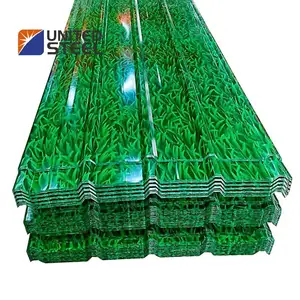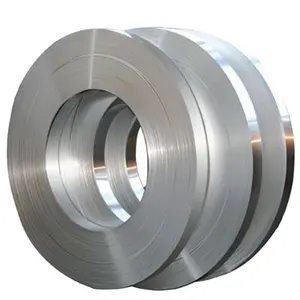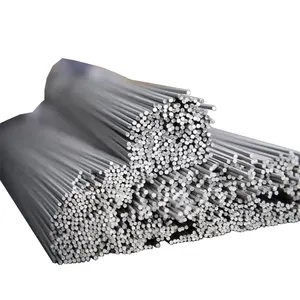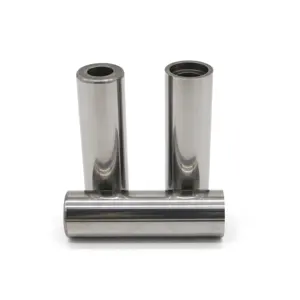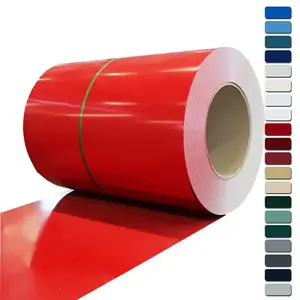Popular in your industry






























































Top categories
About gazing ball and stand
Introduction
Gazing balls and stands have been captivating garden enthusiasts for centuries, offering a unique blend of history, aesthetics, and functionality. These mirrored spheres, originating from 13th-century Venice, have evolved over time, now available in a variety of materials, sizes, and colors. Not only do they add a touch of elegance and charm to any garden, but they also enhance plant health and create intriguing focal points. This comprehensive guide will delve into the world of gazing balls and stands, exploring their history, types, benefits, and how to choose the right one for your garden. We'll also provide tips on installation, maintenance, and safety precautions to ensure your gazing ball remains a vibrant and enchanting feature in your garden.
Understanding Gazing Balls and Stands
A yard globe, also known as a garden globe, gazing ball, or chrome ball, is a mirrored sphere displayed as a lawn ornament. They typically sit atop a conical ceramic or wrought iron stand. Sizes range from 1 inch up to 33 feet in diameter, with the most popular being 12 inches. Originally made of glass, gazing balls may now be made of stainless steel, acrylic, ceramic, or stained glass. Some have a stem for secure placement in a stand, while others are uniform in shape and can sit on grass.
History of Gazing Balls
Gazing balls, also known as yard or garden globes, originated in 13th century Venice, Italy, hand-blown by skilled craftsmen. They gained popularity in the 1930s, appearing in modernistic gardens as a variation on traditional centrepieces. Their design suited the geometric clean lines of the Art Deco style, especially the visual connection with chrome plating. However, their status declined in the 1950s, viewed as a bit tacky. Since the early 21st century, they've seen a resurgence, frequently incorporated in artworks by renowned artists.
Types of Gazing Balls and Stands
Gazing globes, also known as garden balls or orbs, come in a variety of sizes and colors. They range from 3 inches to 12 inches in size, allowing you to choose the perfect fit for your garden. The color options are diverse, including blue, copper, gold, purple, rainbow, red, and turquoise. These gazing balls are made from durable materials like stainless steel and glass, which are interchangeable with most gazing globe stands. This variety ensures you can find a gazing ball and stand that matches your garden's aesthetic and size.
Benefits of Gazing Balls in Your Garden
Gazing balls, especially those made from stainless steel, can enhance plant health in your garden. They generate static electricity, which increases soil temperature and moisture, promoting plant growth. They also boost nitrogen levels in the air and soil, aiding in efficient photosynthesis and enhancing the green color of leaves. Their reflective surface increases light exposure for plants, even those in shade. Additionally, gazing balls can deter pests like birds, deer, and squirrels, and attract beneficial pollinators like bees, moths, and butterflies.
Aesthetic Appeal
Aesthetically, gazing globes add a touch of elegance and charm to any flower garden. These spherical objects effortlessly catch the light, creating an ever-changing display of colors and reflections. Vibrant blossoms mirrored in the globe’s surface create a symphony of hues and patterns that dance with the passing sunlight. This interplay of light, color, and nature makes gazing globes a captivating addition to any outdoor space. They create depth and dimension in a garden, adding a focal point and guiding the viewer through the landscape.
Creating Focal Points
Gazing balls, or garden spheres, are not just decorative elements. They have a unique ability to expand the view and design potential of your landscape. These metallic orbs can create a sense of magic and mystery in your garden. Strategically placed, they can serve as intriguing focal points, drawing the eye and adding depth to your outdoor space. Reflective gazing balls can mirror the beauty of your garden, providing a panoramic view that enchants visitors and enhances your garden's aesthetic appeal.
Enhancing Garden Atmosphere
Gardens serve as sanctuaries, providing an ideal environment for plants and gardeners to flourish. Incorporating a gazing ball enhances this atmosphere, offering aesthetic benefits and promoting a sense of tranquility. These reflective spheres diffuse light, regulate temperature, and increase plant photosynthesis, adding a touch of mystique to a garden. They also reduce stress and promote relaxation for gardeners. Originating in 13th-century Venice, gazing balls were believed to ward off evil spirits and bring good fortune, adding a historical touch to your garden.
Choosing the Right Gazing Ball and Stand for Your Garden
Choosing the right gazing ball and stand for your garden involves considering the size and aesthetics. The stand you choose should be suitable for gazing balls with a diameter of 10-12 inches. Knowing the size in advance will help you better choose the support that suits your gazing ball. The display shelf is the best decoration for any garden or landscape in the courtyard. It is a stable triangle structure with a classic dark appearance, which will not take away the glory of the gazing ball when used, and will add to the beauty of the gazing ball.
Consider the Size
When considering the size of a gazing ball for your garden, the large, high-quality stainless steel spheres are an excellent choice. These large spheres are ideal for decorating larger spaces in your garden and lawn areas. The size of these spheres has a spectacular visual impact, making them perfect for creating stunning modern architectural and landscape design projects. Remember, the size of the gazing ball should be proportional to the area where it will be placed.
Material Matters
Gazing balls, also known as yard globes, were originally made of glass. However, with advancements in technology and design, they are now available in a variety of materials. These include stainless steel, acrylic, ceramic, and even stained glass. Each material offers its own unique aesthetic and durability. For instance, stainless steel gazing balls are highly durable and offer a modern, sleek look. On the other hand, stained glass gazing balls provide a more traditional and colorful appeal. The choice of material depends on your personal preference and the overall theme of your garden.
Color and Design Selection
When selecting the color and design of your gazing ball, consider a hand-blown piece featuring bright colors, combining opaque Lavender, White, Blue, and Sparkle Green. Each ball is unique, adding a distinct charm to your garden. Remember, the design of your gazing ball should complement your garden's aesthetic. A gazing ball with vibrant colors and unique design can be a perfect addition to enhance your garden's beauty.
Installation and Maintenance Tips
Securing a gazing ball to its stand can be a challenge, especially in windy conditions. One method involves using a heavy bottle filled with rocks. Wire is wrapped around the bottle neck, with four wires extending upwards to support the ball. This setup allows for easy ball replacement while maintaining the same base. Another tip is to add sand to the stand to weigh it down. However, be aware that this could potentially affect the interior mirror glaze of the gazing ball. Some users have switched to stainless steel gazing balls to avoid this issue.
Proper Installation
Securing a gazing ball to its stand can be a challenge, especially in windy conditions. One effective method involves using a heavy bottle filled with rocks. Wire is wrapped around the bottle neck, with four wires extending upwards to support the ball. The bottle is then inserted into the base of the stand. This method not only secures the gazing ball but also allows for easy replacement. Another tip is to add sand to the stand to weigh it down, although this may affect the interior mirror glaze of some gazing balls.
Routine Maintenance
Maintaining your gazing ball and stand is crucial for its longevity. One way to refresh your gazing ball is by using a mirror effect paint. Simply spray it into the inside of a clean and dry gazing ball, then tilt and turn to spread it evenly. You may need to use a couple of cans for a thorough job. This method can help restore the reflective surface of your gazing ball, making it look as good as new. Remember, proper maintenance can prevent damage and keep your gazing ball looking vibrant for years to come.
Safety Precautions
Gazing balls, while beautiful, require certain safety precautions. Most notably, they should be placed in low-traffic areas to avoid breakage. Glass gazing balls, in particular, are susceptible to cracking in cold weather and should be stored indoors during winter months. These measures not only ensure the longevity of your gazing balls but also prevent potential accidents in your garden.
Conclusion
Gazing balls and stands are more than just decorative elements; they are a testament to the fusion of art and nature. They enhance the aesthetic appeal of your garden, promote plant health, and create captivating focal points. Choosing the right gazing ball involves considering the size, material, and design that best suits your garden's aesthetic. Proper installation and maintenance are crucial for their longevity, and safety precautions are necessary to prevent potential accidents. Whether you're a seasoned gardener or a beginner, incorporating a gazing ball into your garden can transform it into a vibrant, tranquil, and enchanting space. So, embrace the magic of these reflective spheres and let them illuminate your garden with their mesmerizing charm.
